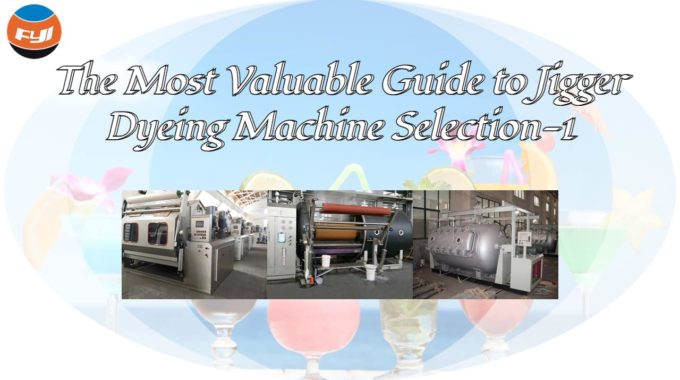
The Most Valuable Guide to Jigger Dyeing Machine Selection-1
According to the dyeing method, dyeing machines can be categorized into three groups: dip dyeing machines, jigger dyeing machines, and pad dyeing machines. Additionally, it can be divided into categories based on whether the dyeing process is continuous or intermittent and if the dyeing machine operates at atmospheric pressure or high pressure.
The jigger dyeing machine is the focus of this article among the several forms of dyeing equipment. It primarily introduces classification and development, technical features of domestic and foreign brands, and the best options for jigger dyeing machine.
Contents
Definition, classification and development of jigger dyeing machine
Definition and history
Jigger dyeing machine was initially constructed out of wood or iron as an open-width dyeing tool. It significantly increased fabric dyeing efficiency over the manual workshop-style operation used at the time and decreased labor intensity and dyeing time. In the late 1970s, the machine constructed of stainless steel increasingly started to appear.
Jigger dyeing machine can be used to dye fabrics with sulfur, vat, reactive, and direct dyes. Additionally, desizing, scouring, bleaching, washing, and post-treatment are all possible uses for it. It is particularly suited for multi-variety and small batch processing and production because to its straightforward structure, flexible operation, convenient maintenance, low investment cost, and wide range of uses.
Because they support the growing trend of small batch and multi-variety dyeing, jigger dyeing machines are still commonly employed nowadays. But after numerous upgrades, the level of equipment has significantly changed. In the middle and late 20th century, France, Germany, Italy, and other developed nations in Europe started to research the automation of the printing and dyeing business.
Their dyeing and finishing machinery is extremely intelligent, especially in the high-precision transmission system, information-based control system, and unconventional management system. In order to achieve the functions of real-time monitoring, intelligent control, and closed-loop feedback adjustment of the jigger dyeing process, the majority of them utilize electronic information technology, frequency conversion speed regulation technology, and sensor detection technology. A worker can monitor several devices simultaneously when combined with the field bus arrangement, exhibiting the features of high efficiency, economy, energy conservation, etc. in line with the advancement of the times.
Classification
Jigger dyeing machines can be categorized using a variety of criteria, including the material of the dye tank, the way they are used, the width of the fabric, the position of the reel, the speed or tension of the fabric line, the temperature and pressure at which they are used, etc. The machines are typically categorized according on their operating pressure and temperature.
Development
The normal temperature jigger can be classified into several distinct types depending on the transmission mode, including friction wheel, hydrodynamic gravity, epicyclic gear, electric differential, and ordinary types. Based on the printing and dyeing factory’s productionh practice.
- The fabric line speed and consistent tension are poorly stabilized by the mechanical differential speed regulator dye vat.
- Despite the fact that DC motors have a lot of beginning torque and a wide speed regulation range, However, when jigging in a climate with high temperatures and humidity, it is simple to burn the windings, and DC motor maintenance is quite inconvenient.
- Better speed and tension consistency of the fabric line is provided by the hydraulic transmission mode. The hydraulic station, however, is difficult to maintain and prone to issues like heat generation and oil leakage.
Additionally, the penetration efficiency of the traditional jigger is poor, it is primarily used for dipping clothes in dye liquid, and some thick and dense materials are susceptible to the “white core” phenomena. As a result, both domestic and international producers have incorporated numerous new technologies to enhance conventional jiggers. like:
The speed measuring system realizes the constant line speed jigging of the fabric and realizes the automatic control of the jigging process, reducing the need for labor, by using the three-phase AC servo motor to drive the cloth roll through the reduction.
The quality and efficiency of dyeing, as well as the pretreatment and washing of cotton and linen fabrics, are increased by the improvement of the uniformity of a pair of rolling mills.
Jigger dyeing machine is the main piece of machinery used in short-process processing. As can be seen, this dyeing procedure uses relatively little energy for the steam, water, power, and dying materials.
In recent years, a high temperature and high pressure jigger dyeing machine that can process polyester fabrics has been successfully developed in order to adapt to the dyeing and finishing of polyester fabrics. The pad roller dyeing tank is now outfitted with a sealable stainless steel tank.
The specific ways of improvement include the following features in addition to the enhancement of constant tension and constant speed:
- Control system with steady speed and tension
- Measures to lower the liquor ratio
- Measures to make rolling liquid more permeable
- Adding an automatic device
- Include a capping mechanism with a high temperature and high pressure.
Principal technical indicators of jigger dyeing machine
Overview
The functional characteristics of most jigger dyeing machines today are similar. In general, it can run the program automatically, edit the process, have constant speed and tension, and have an automatic swinging edge alignment mechanism. The regular temperature jigger typically reaches 98°C, the high temperature jigger’s maximum temperature is 143°C, and the pressure is typically 3 bar. Roll diameter ranges from 400 to 1400 mm, while roll width ranges from 1600 to 4000 mm. The high temperature and high pressure jigger dyeing machine is appropriate for dyeing polyester and its blended materials, while the regular temperature machine is utilized for dyeing cotton and silk fabrics. Jigger dyeing machines can only currently be used to color woven cloth; they cannot be used to dye knit or non-woven fabric.
This article mainly introduces the functional characteristics and technical parameters of Chinese GOLDENSON jigger dyeing machine.
Chinese jigger dyeing machine
China is a big country that produces, purchases and uses jigger dyeing machines. Currently, China accounts for more than 85% of the global output, which is around 3,000 units annually. Jiggers are mostly sold under the GOLDENSON, GOLDMAN, YONLE, HONGDA, and other brands in China. Specifically, the GOLDENSON jigger dyeing machine is introduced here.
GOLDENSON normal temperature machines
Small sample machine and enormous jigger dyeing machines with big capacities are both available in the SMD series. Suitable for small batches and many varieties. The main models are designed as follows:
- Roll diameters of 600, 1200, 1400, and 1500 millimeters.
- The exterior shell has a heated door frame and a sloping roof. The upper cover is heated to room temperature, has two lifting cylinders, pneumatic opening and closing, and is drip-proof.
- Automatically, the top heating turns off when the door is opened.
- Direct steam heating and indirect steam heating are also options for the dyeing tank’s heating system.
- Include the main roll stagger function as a choice.
- exchanger of heat outside.
- Various functional specifications for optional procedures.
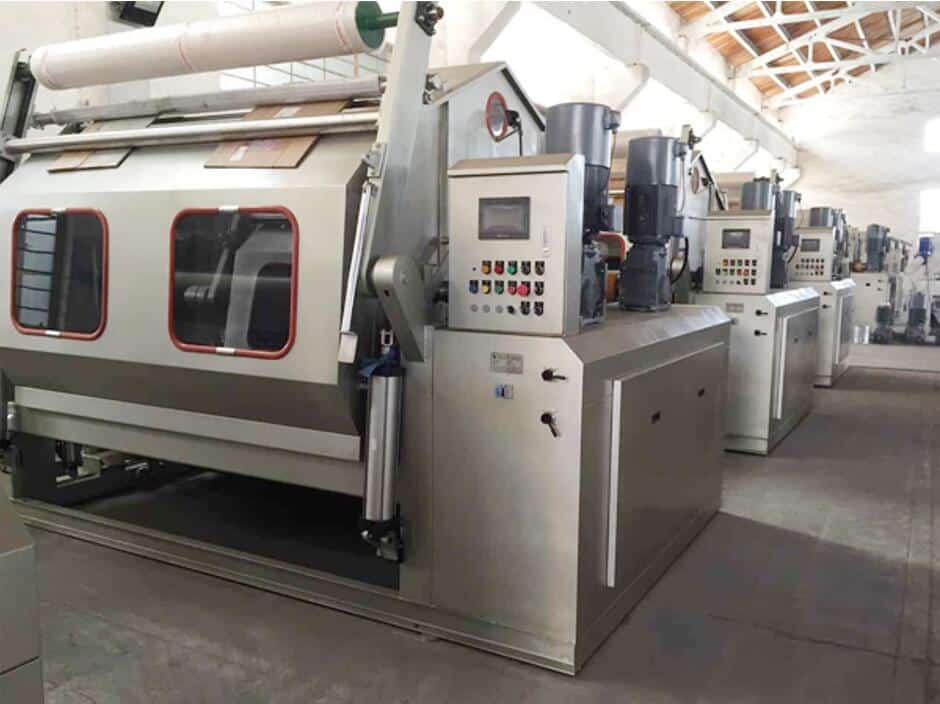
GOLDENSON high temperature machines
Small sample machine and enormous jigger dyeing machines with big capacities are also both available in the SGR series. High cost performance with superior performance. The main models are designed as follows:
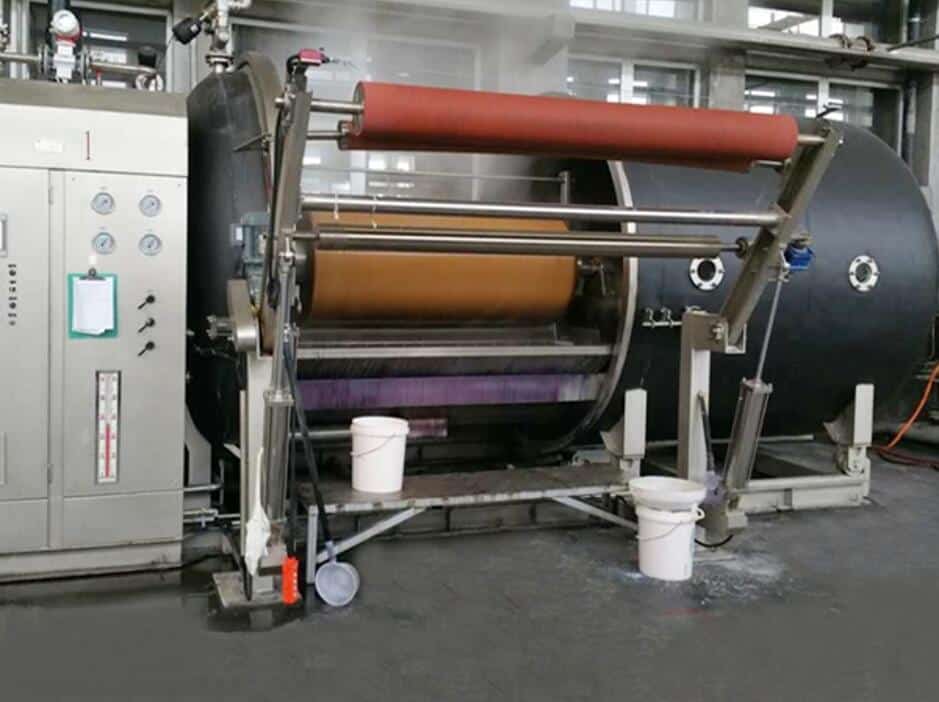
- Roll diameters: 800, 1000, and 1200 millimeters.
- The exterior body is a high-temperature, high-pressure cylinder with a 3 bar working pressure and a 140 °C maximum working temperature.
- There is a safety switch that is available to open the pressure vessel, and there is a 150mm observation window on the exterior of the operation. The extension function of this model is comparable to that of a standard temperature jigger.
- External heat exchanger with great efficiency for quick heating and cooling.
- The feeder attachment tank has a device placed to replicate a liquid level measurement, allowing for quick dye liquor replenishment during process changes.
- Condensed water collects at the cylinder’s base and is released by an automated valve.
The majority of high-temperature jigger dyeing machines produced in China are made of either 100% stainless steel or regular steel. The machine made of regular steel are less expensive, but they typically only last for 24 months since regular steel is not corrosion-resistant.
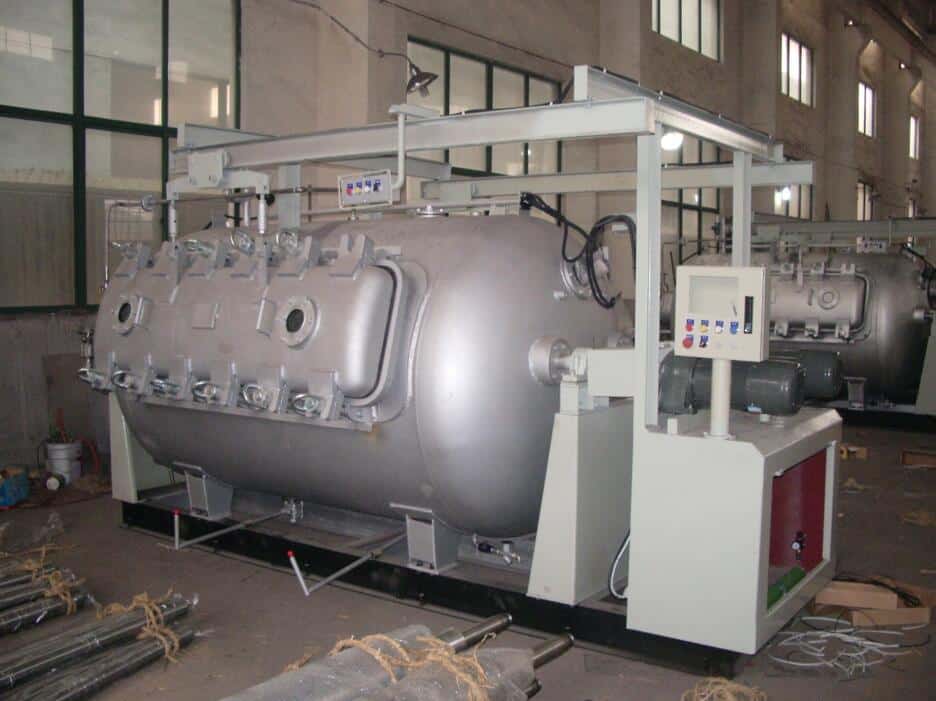
In the next article, 8 jiggers from Germany’s THIES, Italy’s MCS, Netherlands’ HENRIKSEN, Turkey’s MEMNUM, South Korea’s SUNGMOO, and India’s BHATT BROS will be discussed in terms of their functional attributes and technical specifications.
Comments are closed.
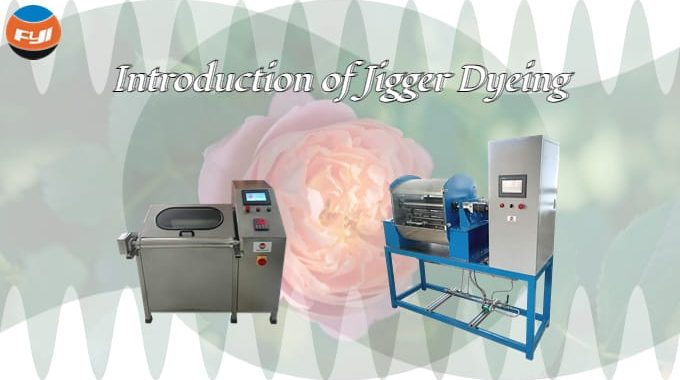
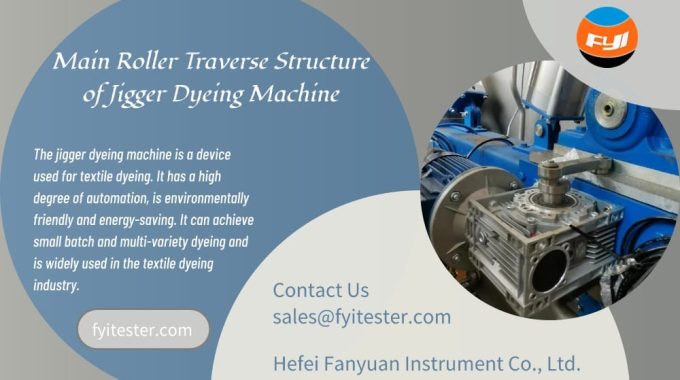
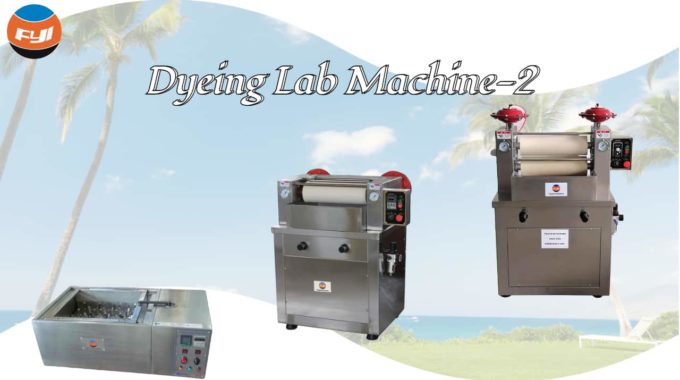
Really informative post. For jigger machine selection it helps me lot.
I’ve never been one for long-form content, but your blog has completely changed my mind.
To anyone seeking valuable information, this blog is a must-read.